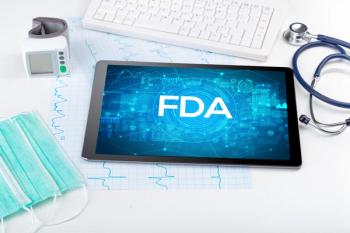
- April 2022 Technician Supplement
- Volume 4
Clinical Tasks Are Next Stage of Development
Relevant training and credentials lead to technicians taking a more active role in pharmacies.
The word clinical suggests interactions with patients. Pharmacists connect emotionally with the word and aspire to serve patients at the clinical level. Pharmacy technicians typically do not think this way about clinical opportunities, but now they can.
In 2009, the American College of Clinical Pharmacy established the following definition: “Clinical pharmacy is a health science discipline in which pharmacists provide patient care that optimizes medication therapy and promotes health, wellness, and disease prevention.”1
Eight years later, in April 2017, Innovations, the magazine of the National Association of Boards of Pharmacy’s, forecast that 50% of technicians would be performing clinical tasks within 5 years.2
That is coming to the pass, though the practice area where technicians have the greatest opportunity to engage in clinical services is the community pharmacy, be it a chain or an independent.
What does that look like? Immunizations are considered the No. 1 clinical service in community pharmacies. Idaho was the first state to provide a training and performance path for technicians to administer influenza immunizations.3
In the summer of 2019, I conducted research for a presentation to technician educators about incorporating the topic of vaccines into their pharmacology courses. Although this was not an effort on my part to advocated for technicians to become
Meanwhile, point-of-care testing is fast becoming the No. 2 clinical service at community pharmacies. Technicians can perform point-of-care testing for patients after completing formal training and demonstrating competency, usually under the review of an experienced pharmacist. COVID-19 testing has given technicians a further opportunity to par- ticipate in clinical patient care.
Another clinical avenue for technicians is patient education, especially for those with
In addition, the Association of Diabetes Care & Education Specialists offers credentialled training and is keenly aware of pharmacies’ increased role with regard to patients who have diabetes. The organization has begun to develop technician-based learning that yields continuing professional education credits, providing an opportunity to develop a clinical viewpoint.7
The technician’s role in patient education has its origins in the Practice Advancement Initiative (PAI) developed by the American Society for Health-System Pharmacists (ASHP) in 2010 to help drive pharmacy practice change at the local level.8 The initial description articulated pharmacist engagement only for patient care, and the goal was to see these changes in place by 2020. In 2019, ASHP revised the articulation in PAI 2030 to include the specific responsibilities and roles technicians would have in patient care.8 One of the most interesting parts of the document is item A9 because it is not pharmacist-specific.9
According to A9, “the pharmacy workforce should lead medication education for patients and caregivers that optimize outcomes, including in care transitions.”9
Disease state management has become a main element in medication reimbursement levels. It encompasses medication adherence, reconciliation, and synchronization as well as patient education, all of which contribute to optimal health outcomes.
Every conversation about these topics that technicians have with patients is an opportunity to provide them with care that optimizes medication therapy and promotes disease prevention, health, and wellness.
Technically speaking, a technician can take on all the tasks of a pharmacist, except providing therapeutic counsel. And pharmacists cannot perform every task without under-taking proper training, passing exams, obtaining credentials, and keeping their professional status with appropriate CPE credits. Technicians can also now access the proper training and earn credentials to become more active members of the clinical pharmacy team.
Professional pathways do exist for technicians, and the professional must find a way to support them.
Christine Cline-Dahlman, BFA, CPhT, is the founder of PharmTechForward, for which she is also an author and a contributor of educational content development, in Woodstock, Georgia.
References
1. Clinical pharmacy defined. American College of Clinical Pharmacy. Accessed March 11, 2022. https://www.accp.com/about/clinicalPharmacyDefined.aspx
2. Evolving pharmacy technician roles open new doors, pose new regulatory challenges. Innovations. 2017;46(4):6-8. Accessed March 11, 2022. https:// nabp.pharmacy/wp-content/uploads/2016/07/Innovations_April_2017_Fi- nal.pdf
3. Sasser J. The first pharmacy technicians to give immunizations: how Idaho did it. Learning + Leading. March 2022. Accessed March 11, 2022. https:// info.nhanow.com/learning-leading-blog/the-first-pharmacy-technicians- to-give-immunizations-how-idaho-did-it
4. Guidance for PREP Act coverage for qualified pharmacy technicians and state-authorized pharmacy interns for childhood vaccines, COVID-19 vac- cines, and COVID-19 testing. US Department of Health & Human Services. October 20, 2020. Accessed March 11, 2022. https://www.hhs.gov/sites/ default/files/prep-act-guidance.pdf
5. Eighth amendment to declaration under the Public Readiness and Emer- gency Preparedness Act for medical countermeasures against COVID-19. Federal Register. August 4, 2021. Accessed March 11, 2022. https://www. federalregister.gov/documents/2021/08/04/2021-16681/eighth-amend- ment-to-declaration-under-the-public-readiness-and-emergency-pre- paredness-act-for
6. Working together to prevent type 2 diabetes. CDC. Updated August 27, 2021. Accessed March 11, 2022. cdc.gov/diabetes/prevention/index.html
7. ADCES Career Path Certificate Program. Association of Diabetes Care & Education Specialists. Accessed March 11, 2022. https://www.diabeteseduca- tor.org/education/career-path-certificate
8. PAI FAQs. American Society of Health-System Pharmacists. Accessed March 11, 2022. https://www.ashp.org/pharmacy-practice/pai/pai-faqs?loginretur- nUrl=SSOCheckOnly
9. PAI 2030 recommendations. American Society of Health-System Pharmacists. Accessed March 11, 2022. https://www.ashp.org/pharmacy-practice/ pai/pai-recommendations?loginreturnUrl=SSOCheckOnly
Articles in this issue
over 3 years ago
Learn to Mitigate Feelings of Burnout and Stressover 3 years ago
Professional Liability Insurance Offers Peace of Mindover 3 years ago
Billing for Care Presents Challenges and Opportunitiesover 3 years ago
Automation Provides Pathway to Successover 3 years ago
Is It a Job or a Career?Newsletter
Stay informed on drug updates, treatment guidelines, and pharmacy practice trends—subscribe to Pharmacy Times for weekly clinical insights.




















































































































































































































